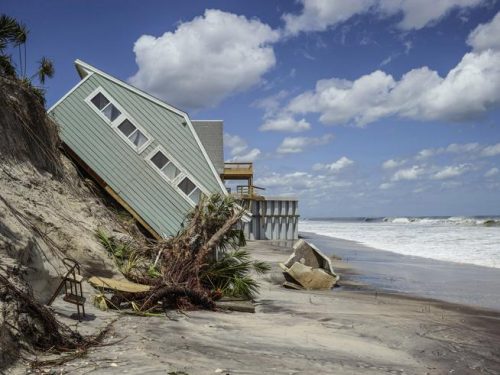Arctic change is impacting lower latitudes
March 7, 2019
Heather Rebekah McFarland
9074746286
A new, short article written for the public compiles evidence that the footprint of
Arctic change is expanding.
“People in other places may not have a full understanding that as the Arctic becomes
disrupted the number of social and environmental systems in lower latitudes that are
affected is growing,” said co-author Amy Lovecraft from the University of Alaska Fairbanks.
Lovecraft is a professor of political science and director of the Center for Arctic
Policy Studies at the International Arctic Research Center. She and 14 others from
multiple disciplines wrote the paper. The group focused on sharing a sobering message
and calling people to action globally.

The article, published today in the journal Earth’s Future, provides evidence of the effect of Arctic change, including sea level rise, greater storm impacts, and ocean and atmospheric warming.
Under current warming trajectories, sea level is projected to rise 1 meter this century, with the melting of Arctic land ice being a major contributor. New York, Los Angeles and Houston would be just a few of the cities worldwide forced to deal with the impacts.
Changes to the Arctic jet stream may also significantly affect storms and extreme weather events, such as drought and unusual snowstorms already occurring in the continental U.S.
Arctic sea ice loss has serious global consequences, as sea ice helps to regulate Earth’s climate by reflecting incoming solar radiation. As sea ice cover declines, Arctic warming is amplified, further accelerating climate warming well beyond the Arctic.
Permafrost thaw is expected to cost Alaska an estimated $2.1 billion dollars in infrastructure damage and release significant amounts of carbon dioxide and methane into the atmosphere, contributing to further warming of the planet.
The paper closes with a call to action.
“If we want to safeguard our people and society, we need to act now to both reduce emissions to curb warming and to prepare for the inevitable changes already set in motion,” said Twila Moon, lead author from the National Snow and Ice Data Center at the University of Colorado Boulder.
Other co-authors of the study included Erin Trochim of UAF’s IARC; Irina Overeem, Gifford Miller, Matt Druckenmiller and Ted Scambos of CU Boulder; Marika Holland of the National Center for Atmospheric Research; Henry Huntington of the University of Michigan; Christina Schädel and Edward A. G. Schuur of Northern Arizona University; Francis Wiese of Stantec; and Dee Williams of the American Association for the Advancement of Science.
ADDITIONAL CONTACTS: Amy Lovecraft, 907-474-2688, allovecraft@alaska.edu. Twila Moon, 406-579-3088, twila.moon@nsidc.org. Audrey Payne, National Snow and Ice Data Center, CU Boulder, 303-492-1497, press@nsidc.org.
EDITOR'S NOTE: You can read the study in Earth’s Future at https://agupubs.onlinelibrary.wiley.com/doi/10.1029/2018EF001088.


